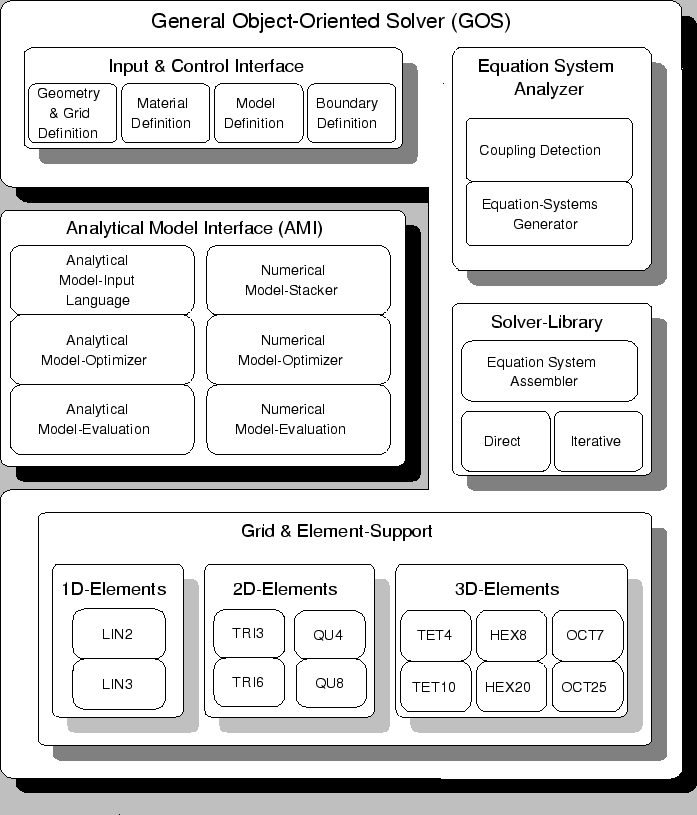
|
However, the development of new complex physical models and its practical realization requires a large expenditure of time. Since modeling, especially for oxidation, still is in a fairly experimental state, it seems to be obvious to develop a tool that supports a lot of different features for rapid prototyping. With the traditional approach to implementing process simulators the discretized equations and intelligence about when to add extra equations or terms is hard-coded in the simulator. Access to and an understanding of the source code would normally be required to prototype a new model. There are quite a lot of reasons why it is necessary to change the common used implementation approach. The most significant are
To fulfill these liquidated demands the requirements for a general PDE solver have been analyzed carefully and the common features, such as modeling of physical definitions, parameter and model library, grid-adaptation, numerical solver, simple front-end controller as well as geometry and boundary definition have been separated. As a result AMIGOS has been developed. A tool that translates a mathematical formulation of a nonlinear discretized coupled partial differential equation system into a highly optimized model which will then be passed to a nonlinear numerical solver that can handle different mathematical models on various grids as well as interfaces and boundaries.
To support this flexibility the model developer has to implement the complete discretization within the Analytical Model Interface (AMI). For obvious reasons it is necessary to go down to the low level discretization layer, because the vast variety of actual problems can not be handled by a simple standard discretization method. It is widely common knowledge that there are preferable discretization methods for definite problems. Whereas in standard simulation tools a fixed method is prescribed AMIGOS also offers the possibility to use a mixed discretization. For example the developer may use a finite element discretization for mechanical problems and can combine a diffusion process using finite box discretization that is known to be superior in case of material conservation laws. The negative consequence is that the complexity of the Analytical Model Interface increases, because not only the partial differential equation must be understood by the developer, but also the mathematical basics of discretizing this system.